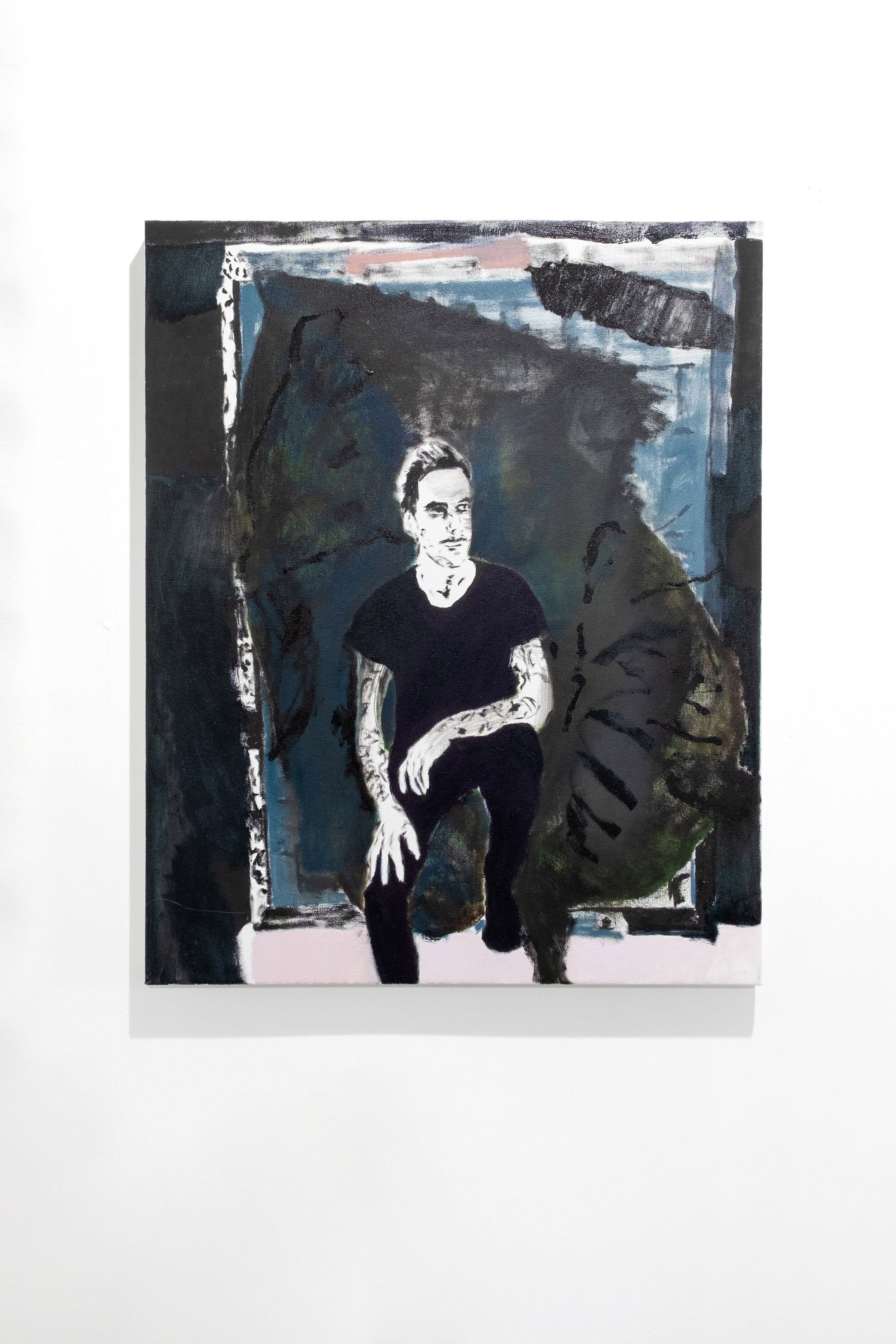
A Map of Scents, John Brooks’ first solo exhibition in four years, presents recent work that conjoins the artist’s individual painting, poetry, and collage practices.
Once at a standstill as a painter, Brooks turned to other expressive modes for a way forward, which resulted in fragmented images that embrace vulnerability, especially on the heels of urgency. Conceptually and technically, he draws from German Expressionism and European post-war art to address contemporary life in America. On the one hand, the figures he paints—who range in age, gender, and race—seem preoccupied, their thoughts elsewhere, concerned and focused in a manner that borders on paranoia. On the other, his mark making is incomplete and emotive, aligning with aesthetic trends of twentieth century avant-gardes. His paintings and drawings consider what it means to deal with and participate in historical recurrence.
Viewers may find that Brooks’ work nears a treatment of identity politics as they pertain to members of the LGBTQ community. Brooks identifies as a gay man, yet his paintings are not necessarily a record of his personal experience. Instead, the rigidity of traditional gender norms and its impact are addressed. For example, markers of masculinity may arise in the form of emblems of the American west. Brooks, however, seeks to expand the notion of manhood to include any number of qualities or actions, rendered in A Map of Scents as moments of high emotion and confidence. More directly, Brooks sheds light on LGBTQ injustice in a portrait of Orlando Boldewijn, a gay Dutch man murdered in 2018 upon meeting someone on the dating app Grindr, that also alludes to the Pulse nightclub mass shooting in Orlando in 2016.
The titles for his paintings are taken from Brooks’ poems, a kind of collage exercise itself. The artist’s poetry often links location and memory. Likewise, the works in A Map of Scents may place figures amongst palm fronds or by their bedside to evoke narratives that lack vital details. These are intimate objects, for sure, but Brooks’ careful omission of specifics is an invitation for viewers to see themselves in the people he paints and reconsider their own identity.
-Hunter Kissel













